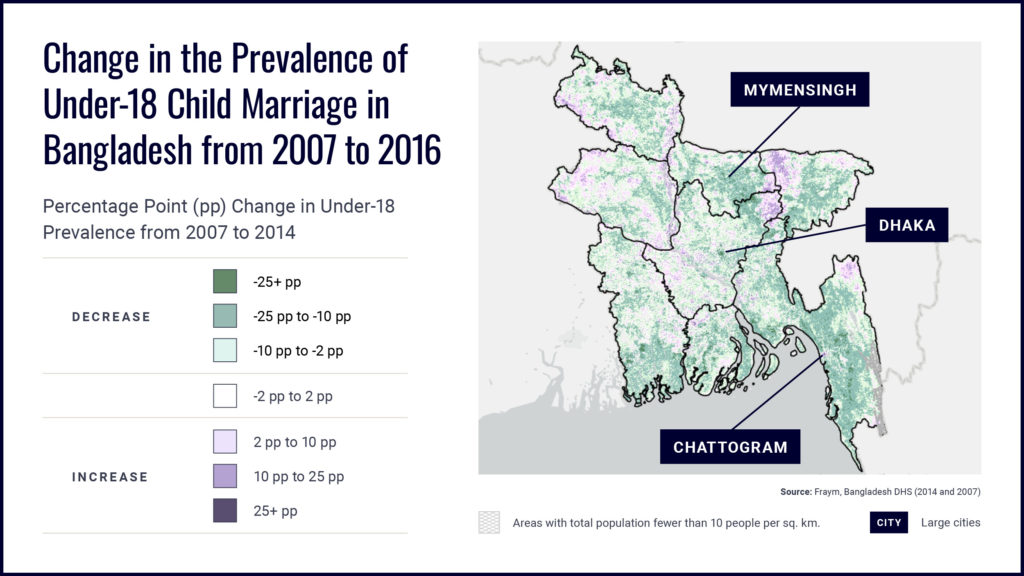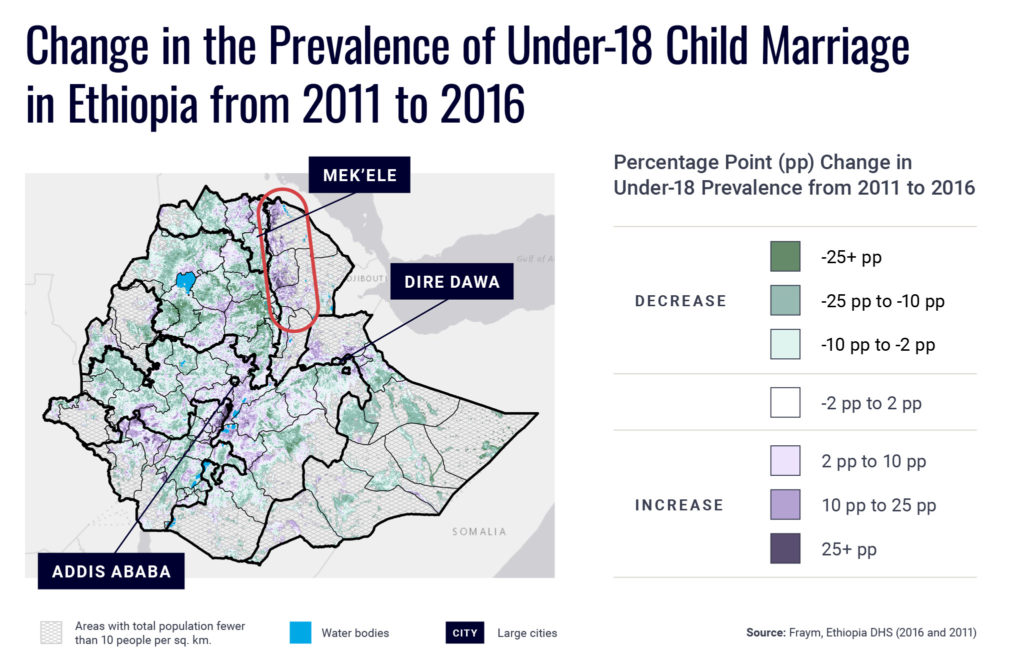Build Effective Social and Behavior Change Strategies

In its October 2021 report, Towards Ending Child Marriage, the United Nations Children’s Fund (UNICEF) estimated progress would need to be increased 15 times in order to end child marriage by 2030. While the practice of child marriage has declined globally, regionally, and nationally, progress has failed to reach the most vulnerable populations and communities. Similarly, larger trends relating factors such as economic growth and child marriage require additional research. To enact equitable, lasting impact it’s important to understand the nuance between these factors. Fraym analysis confirms many of the findings of this report, further emphasizing the need for data-driven, localized understanding of the forces that drive change in national numbers.

Subnational trends within countries that have made the greatest progress towards eliminating child marriage reveal successes and challenges in reaching those most vulnerable. Maps of these findings in Bangladesh and Ethiopia for example, confirm this point. Both Bangladesh and Ethiopia experienced widespread declines in child marriage between 1994 and 2019, a trend reflected similarly in the location-based data with widespread subnational decreases in both countries. In Bangladesh, declines in child marriage have reached segments of society across socioeconomic status, especially a notable 20% drop among the poorest wealth quintile over the past 25 years. Ethiopia’s progress, in contrast, has primarily benefited the richest and most educated girls. According to Fraym data, this trend is pronounced in the last five years of the same period, with communities in poorer regions like Afar experiencing increases while the national prevalence overall declined three percentage points.

Similar variation was revealed during an in-depth investigation of broad assumptions on the relationships between risk factors and prevalence. While female employment is broadly beneficial, UNICEF notes that female informal employment can actually indicate increased vulnerability. In contrast, availability of skilled or formal sector work opportunities for women is a stronger correlate with a reduction in child marriage.
Fraym data supports this finding. Across the six countries studied, only two saw increased female employment broadly as correlating with a notable reduction in child marriage prevalence. In Bangladesh, adult female employment markedly tended to have higher rates of child marriage, possibly due to nearly half of these women being employed in unskilled manual labor or self-employed in agriculture. These are classified as vulnerable employment sectors primarily because of the lack of sufficient social protections. Increased female education, especially secondary education, will be essential to equip girls with the skillset necessary for promising employment opportunities. The nuance beneath broad statistics reveal key findings that organizations can leverage to achieve the rapid reduction necessary to reach the Sustainable Development Goals.
For child marriage, national-level trends belie important contextual dynamics. Fraym data identifies local level differences that can inform equitable programming strategies and better target programming in communities that are most vulnerable. Localized spatial data powerfully illustrates UNICEF’s findings in Bangladesh, Ethiopia, and elsewhere. While countries have made progress towards reduction, “it is not clear whether programmes are always reaching the most vulnerable girls of the areas that have the highest prevalence of burden of child marriage,” necessitating “a more complete understanding of the context in which decisions about marriage are made.” With thoughtful investment, child marriage can be eliminated by 2030 without leaving those most vulnerable behind.